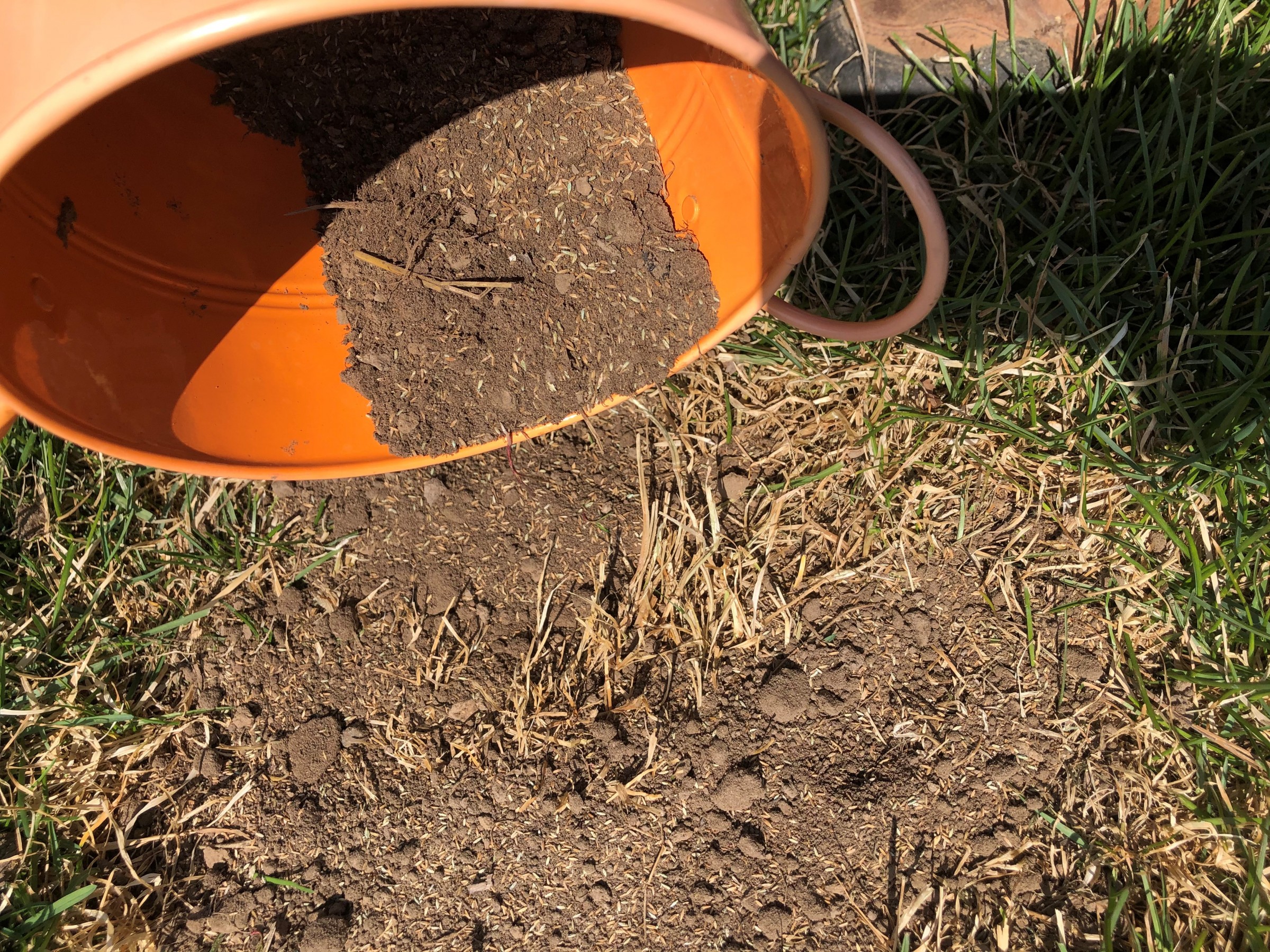As lawns wake up from winter and start greening up, many of us are seeing spots where the grass has died over the winter. While “dog spots” are common, caused by high concentrations of nitrogen where dogs have urinated over the winter, there are other things that can cause areas of dead grass as well. Along walks and driveways turf may have been damaged by shovels or plows, or grass that was exposed during winter where insulating snow was removed may also have been died.
To repair larger areas of damaged grass, it is best to work up the soil and re-seed. For smaller areas, such as dog spots, a simpler approach can work. If the spot is smaller than the size of your fist, there is no need to do anything as the area will likely fill in from surrounding grass in a few weeks. For larger spots, some reseeding will be necessary.
First, remove at least some of the dead, dry grass blades. You don’t have to remove it all, but rake or pull off enough that you can see at least some of the soil below. Then, put some soil, collected elsewhere, in a bucket. If you don’t have a garden area where you can get a scoop of soil, you can use some bagged soil or even potting mix. Next, throw a couple handfuls of grass seed in the bucket and mix it all together. Try to match the species of grass seed to what is currently growing in your lawn (e.g., Kentucky bluegrass, fescue or a blend).
Sprinkle the soil/seed mix over the spot and gently water to settle the soil mix. Keep the seed moist until it germinates, which might require misting daily if there is no rain. Within a few weeks, the spot should be greening up, though it might take a bit longer to fully blend in with the rest of the grass.
We have much more information about growing and caring for lawns in Wisconsin.
By Diana Alfuth





